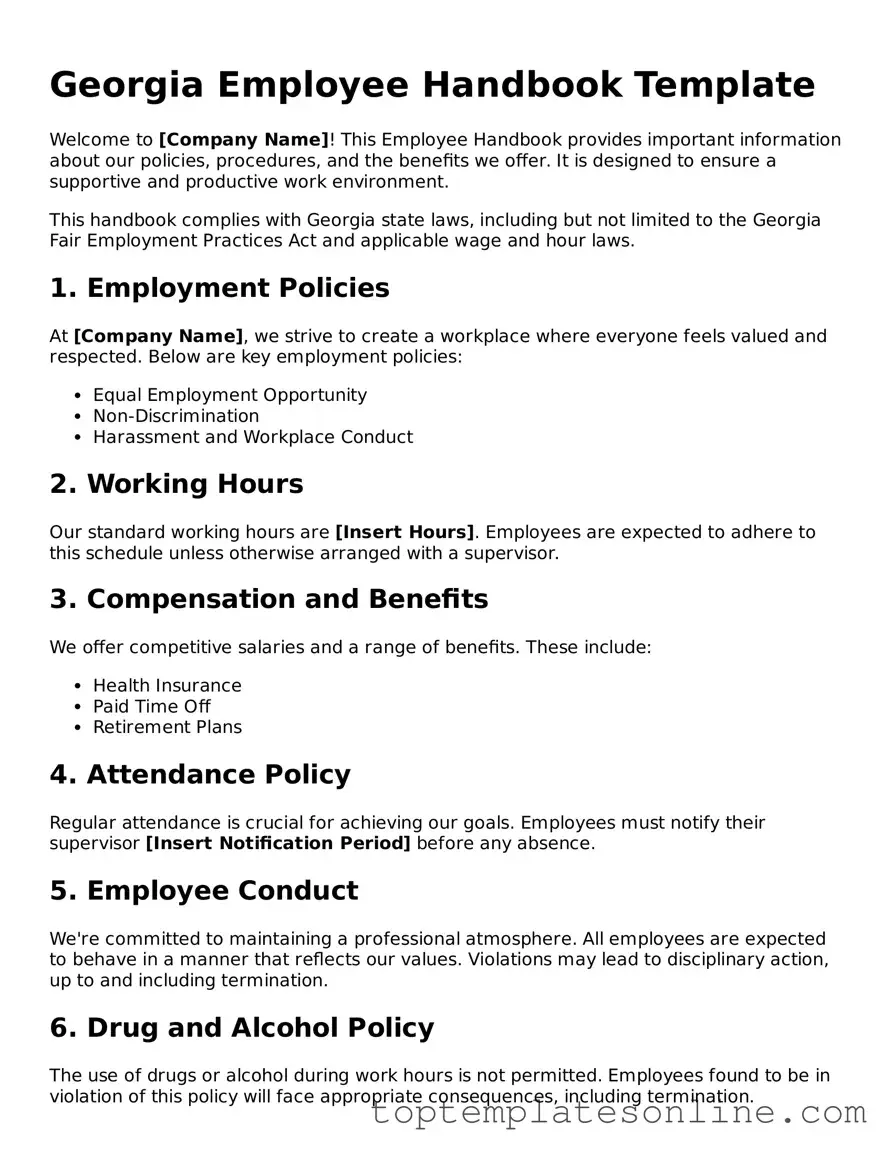Blank Employee Handbook Template for Georgia State
The Georgia Employee Handbook form serves as a vital document that outlines workplace policies, procedures, and expectations for employees. This handbook not only helps in fostering a positive work environment but also protects both employees and employers by clarifying rights and responsibilities. Understanding its components is essential for compliance and effective communication within any organization.
Customize Employee Handbook Here
